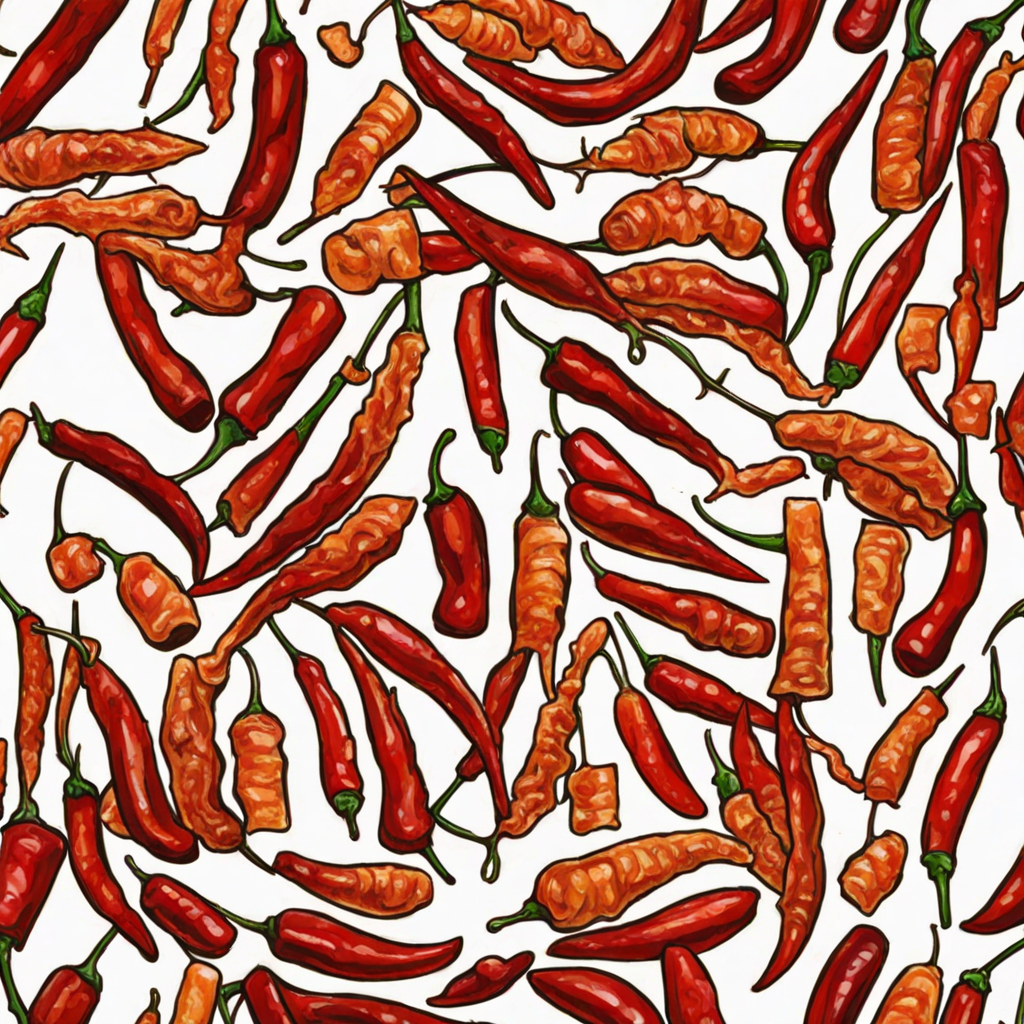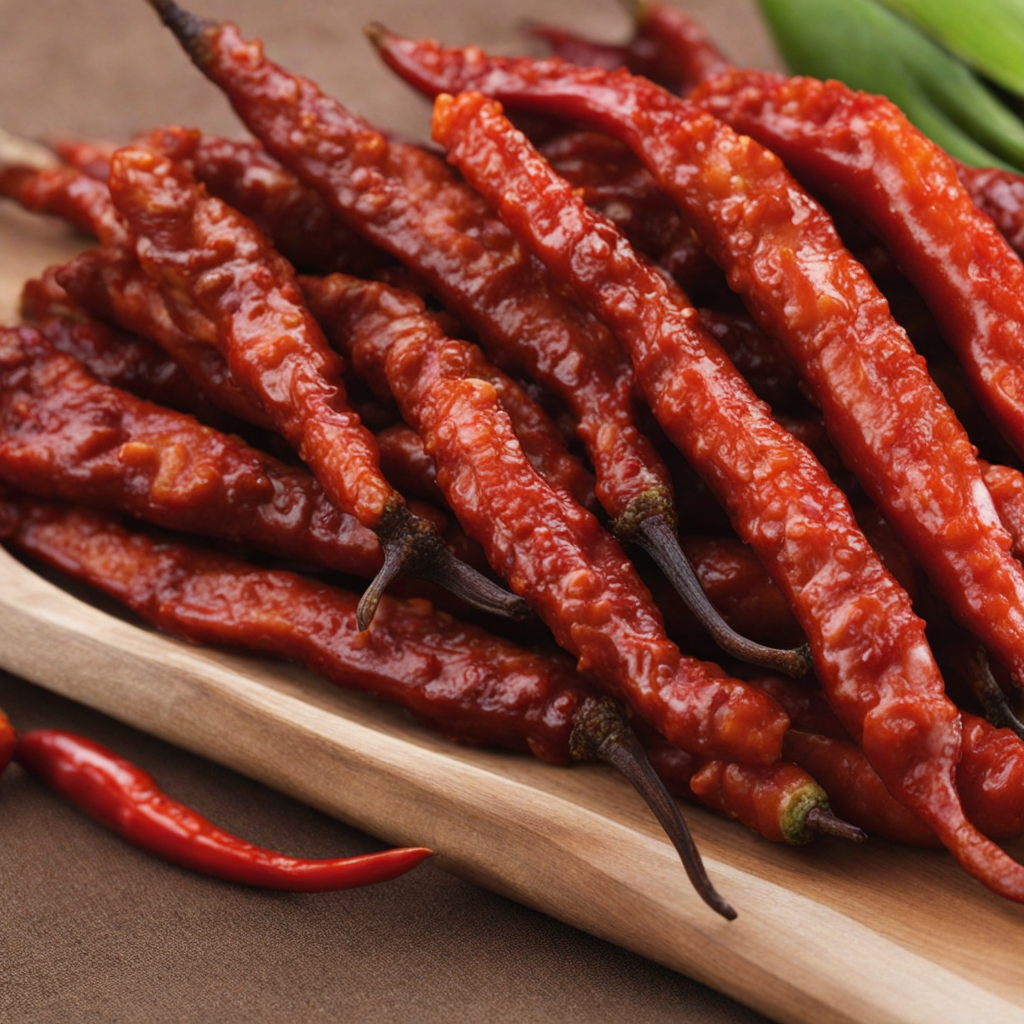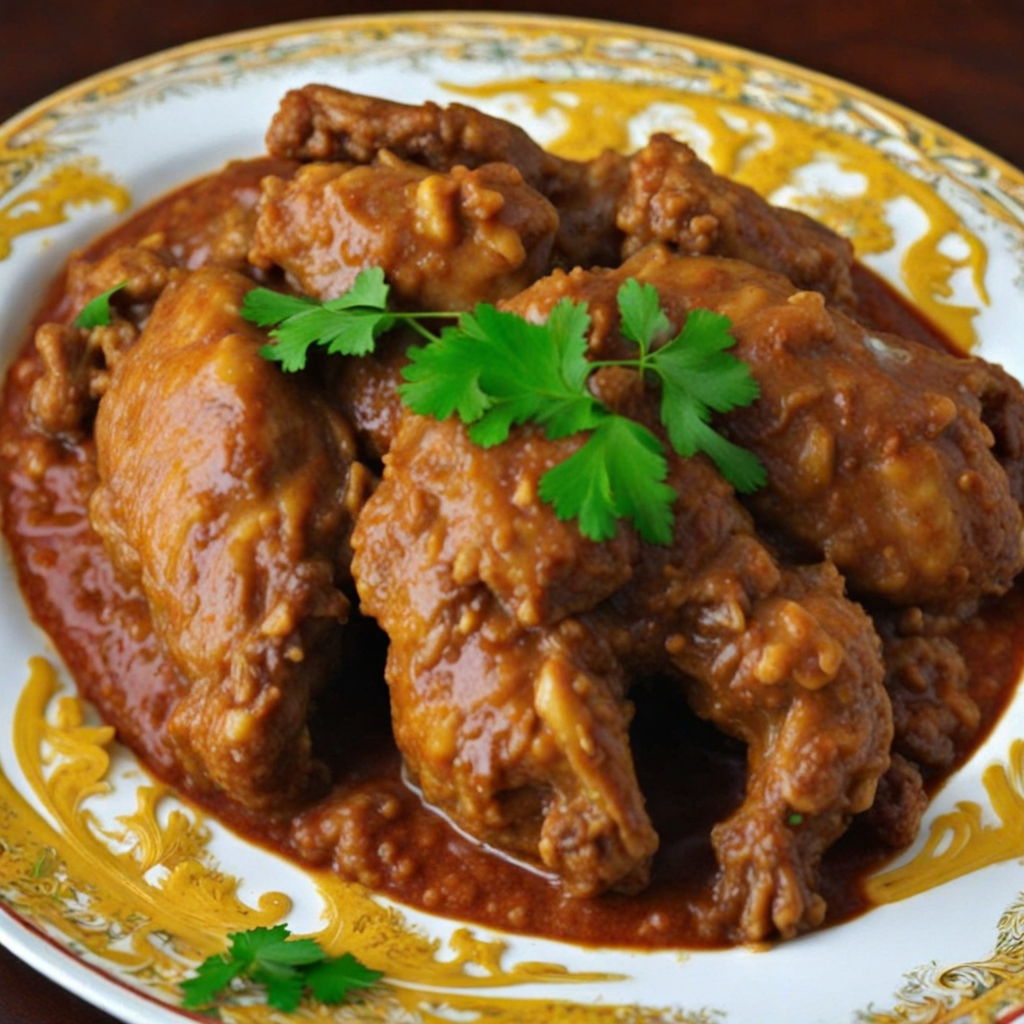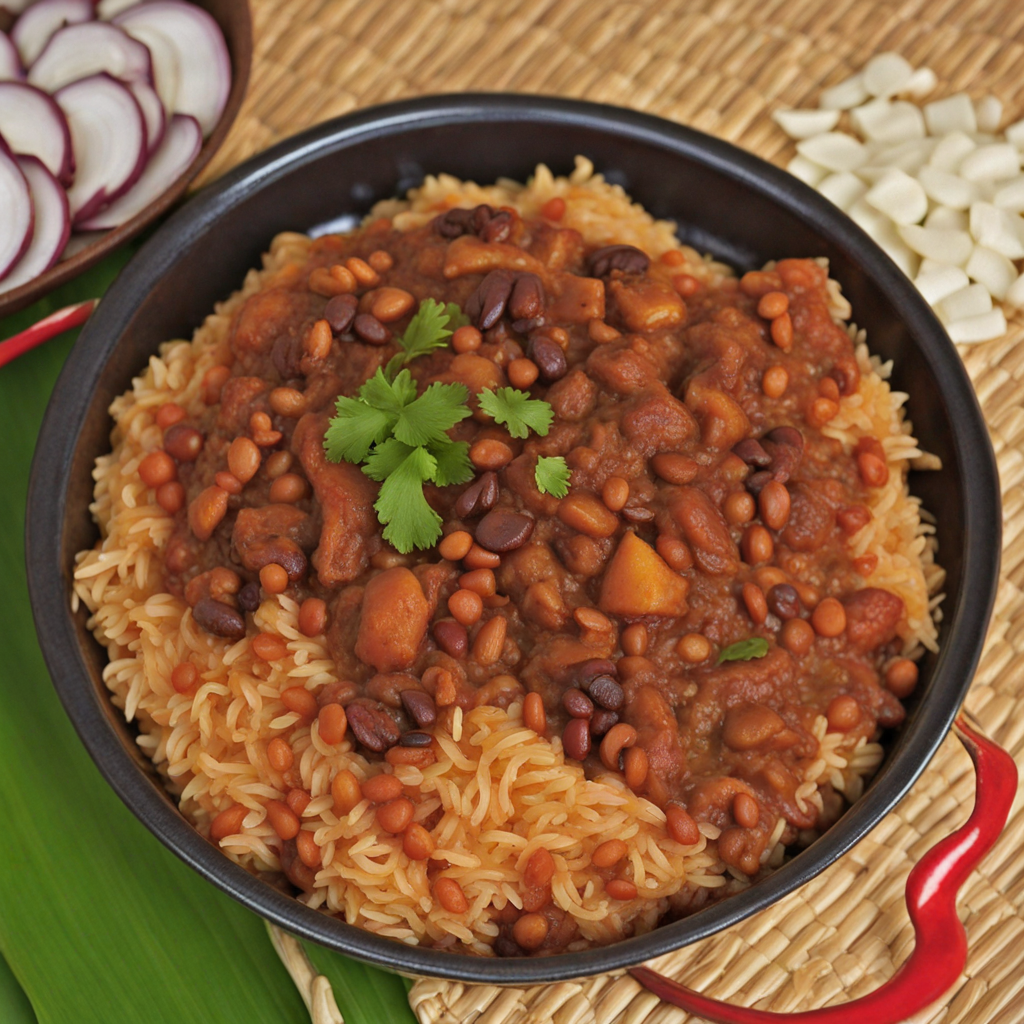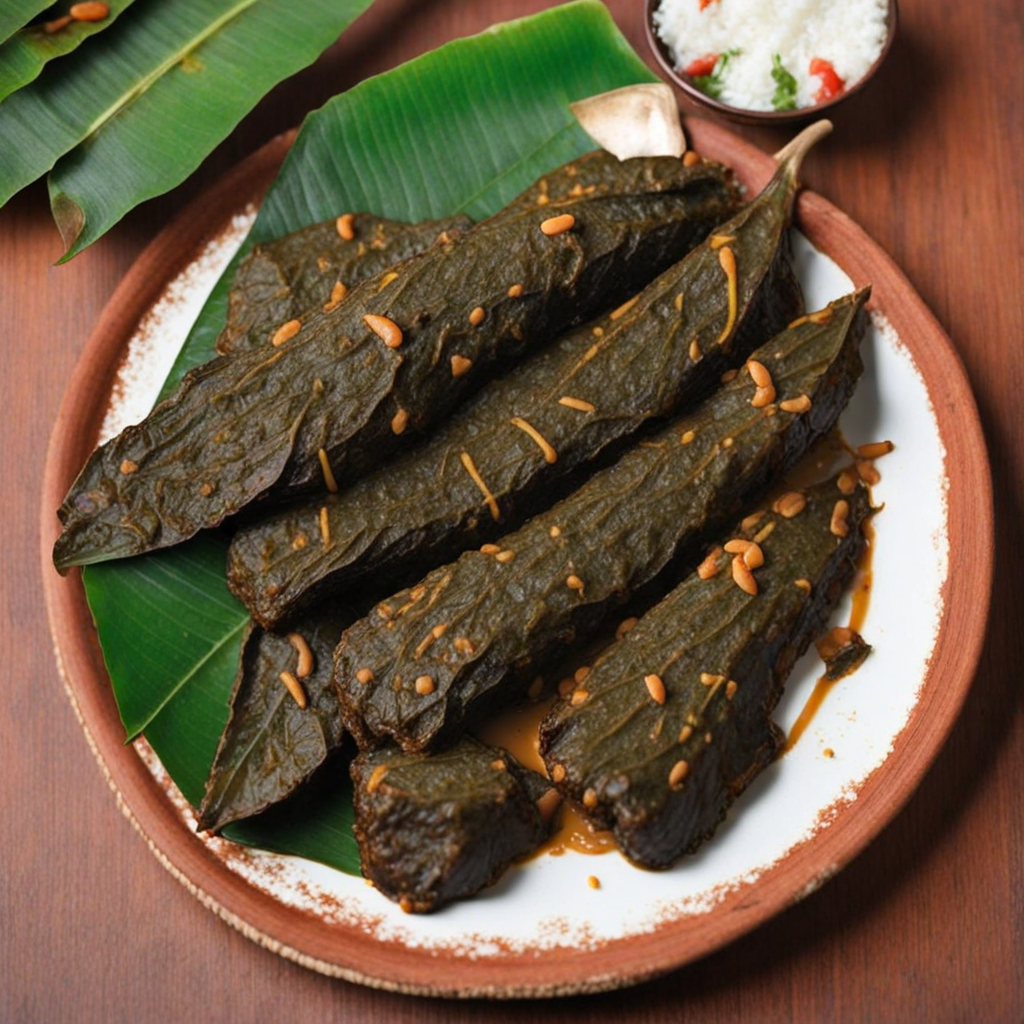Pili Pili
Pili Pili is a vibrant and spicy condiment that hails from the rich culinary heritage of the Congo. It is primarily made from a variety of hot peppers, often the African bird's eye chili, which gives it its signature heat. The peppers are typically ground into a paste and combined with ingredients such as garlic, ginger, and sometimes vinegar or citrus juice to create a zesty, flavorful blend. This fiery concoction not only adds a kick to dishes but also enhances the overall flavor profile, making it a beloved staple in Congolese kitchens. In the Congo, Pili Pili is used to complement various dishes, from grilled meats to stews and even rice. Its versatility allows it to be drizzled over food or used as a marinade, making it a perfect companion for barbecued fish or chicken. The heat of the peppers is balanced by hints of tanginess from the added ingredients, creating a complex flavor that can awaken the taste buds and elevate any meal. For those who enjoy bold and spicy flavors, Pili Pili is a must-try. Not only is Pili Pili known for its heat, but it also embodies the essence of Congolese cuisine, which often emphasizes the use of fresh, locally sourced ingredients. As you explore this fiery condiment, you’ll discover its ability to transform simple dishes into exciting culinary experiences. Whether you’re a spice enthusiast or simply curious about new flavors, Pili Pili is sure to impress with its delightful combination of heat, tang, and aromatic depth.
How It Became This Dish
The History of Pili Pili: A Culinary Gem from Congo Pili Pili, also known as piri-piri or peri-peri, is a vibrant and fiery chili pepper that holds both culinary and cultural significance in the Democratic Republic of Congo (DRC) and across much of Central and Southern Africa. Its name, derived from the Swahili word "pili pili," translates to "pepper pepper," reflecting both its flavor and its importance in regional cuisine. The story of Pili Pili is not just about a spice; it is a narrative woven into the fabric of Congolese culture, history, and social life. #### Origins and Early Use Pili Pili is believed to have its roots in the Americas, specifically in Mexico and South America, where various chili peppers were cultivated by indigenous peoples for millennia. Following the Columbian Exchange in the 15th and 16th centuries, these peppers made their way to Africa, where they were embraced and adapted by various cultures. The arrival of the chili pepper in Africa coincided with the transatlantic slave trade, which facilitated the movement of peoples, foods, and agricultural practices. By the time the chili pepper reached the DRC, it was integrated into local culinary practices. Congolese people began to cultivate their own varieties of Pili Pili, refining its flavor and heat to suit their palates. This local adaptation not only made the chili a staple in their diets but also contributed to its symbolic significance within the community. #### Cultural Significance Pili Pili is more than just a condiment; it is an integral part of Congolese identity. The chili pepper is often used in traditional dishes, where it adds a distinctive heat that enhances flavors and aromas. Congolese cuisine is rich and diverse, heavily influenced by the availability of local ingredients such as cassava, plantains, and various meats. Pili Pili is particularly associated with grilled meats, stews, and sauces, where it serves as both a flavor enhancer and a preservative. In the DRC, Pili Pili is not solely a culinary element; it is also a symbol of hospitality and community. Sharing a meal seasoned with Pili Pili often signifies trust and camaraderie among individuals. The act of preparing and consuming spicy food together fosters bonds, creating a sense of togetherness that transcends social and economic differences. During communal feasts or celebrations, dishes infused with Pili Pili are often served, highlighting its role in social gatherings. #### Development Over Time As the DRC underwent various socio-political changes throughout the 20th century, so too did the culinary landscape, with Pili Pili evolving alongside it. The country experienced colonial rule, wars, and the struggle for independence, all of which impacted agricultural practices and food availability. However, the resilience of Congolese culture ensured that traditional foods, including those flavored with Pili Pili, remained central to national identity. In the post-independence era, the promotion of Congolese cuisine became a point of pride. Chefs and home cooks began to experiment with Pili Pili, creating new dishes that honored traditional flavors while incorporating modern culinary techniques. This evolution led to the emergence of various Pili Pili sauces, often made with a blend of fresh peppers, garlic, vinegar, and spices, catering to both local tastes and international markets. These sauces gained popularity not just in Congo but also with the diaspora and in restaurants around the world, introducing the complex flavors of Congolese cuisine to a global audience. #### The Global Spread of Pili Pili As Congolese migrants settled in different parts of the world, they carried their culinary traditions with them. The growing global interest in African cuisines, particularly in the late 20th and early 21st centuries, has further facilitated the spread of Pili Pili. Restaurants specializing in African cuisine have begun to feature dishes seasoned with Pili Pili, making it a sought-after ingredient in international culinary circles. In addition to its culinary applications, Pili Pili has also found a place in the world of health and wellness. Research has highlighted the potential health benefits of chili peppers, including their anti-inflammatory properties and ability to boost metabolism. As a result, Pili Pili has gained attention among health-conscious consumers seeking to incorporate bold flavors into their diets. #### Contemporary Relevance Today, Pili Pili continues to be a staple in Congolese kitchens and a symbol of cultural pride. The resurgence of interest in indigenous and traditional foods has prompted a renewed appreciation for local ingredients, including the diverse varieties of Pili Pili grown in the region. Farmers are increasingly recognizing the economic potential of growing and exporting Pili Pili, contributing to local economies while preserving traditional agricultural practices. Contemporary chefs in the DRC and the diaspora are also exploring innovative ways to incorporate Pili Pili into modern dishes, resulting in a fusion of traditional and contemporary culinary practices. The chili pepper is now featured in gourmet sauces, marinades, and even desserts, showcasing its versatility and appeal to a wide range of palates. #### Conclusion The history of Pili Pili is a testament to the resilience of Congolese culture and the enduring appeal of its culinary traditions. From its origins in the Americas to its establishment as a staple in Congolese cuisine, Pili Pili has transcended geographical boundaries and evolved into a symbol of identity, community, and innovation. As the world continues to embrace the rich flavors of African cuisines, Pili Pili stands out as a fiery reminder of the power of food to connect people, celebrate heritage, and foster a sense of belonging. The journey of Pili Pili reflects not only the history of a spice but also the story of a people, their struggles, and their triumphs, encapsulating the essence of Congolese culture in every fiery bite.
You may like
Discover local flavors from Congo


